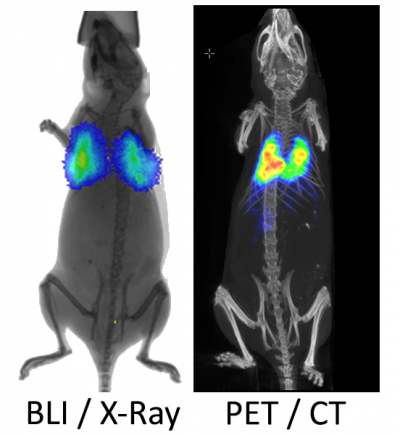Bioluminescence is the production of light by a living organism, such as the firefly. These organisms produce an enzyme known as luciferase which with energy catalyses its substrate, luciferin, to create light. Engineering cells to express luciferase can therefore provide useful information on the behaviour of cells within the body, such as the location of cells after transplantation, their viability, proliferation, and migration. At CABI we apply this technique to investigate various disease models and experimental therapies.
As luciferase requires energy to produce light, a change in light production provides a measurement of cell death or proliferation. This mode of assessment provides rapid feedback on the response of cancer to new treatments and drug combinations, and their applicability to different tumour types.
For regenerative medicine, we use bioluminescence imaging to follow the survival and retention of stem cells that have been transplanted into the liver, kidneys, heart, or other organs. This helps us to develop ways to repair damage using cells as a therapy, and to produce new materials and transplantation strategies for aiding cell growth and retention.
See the collaborations page for information on access to this system
 Close
Close


